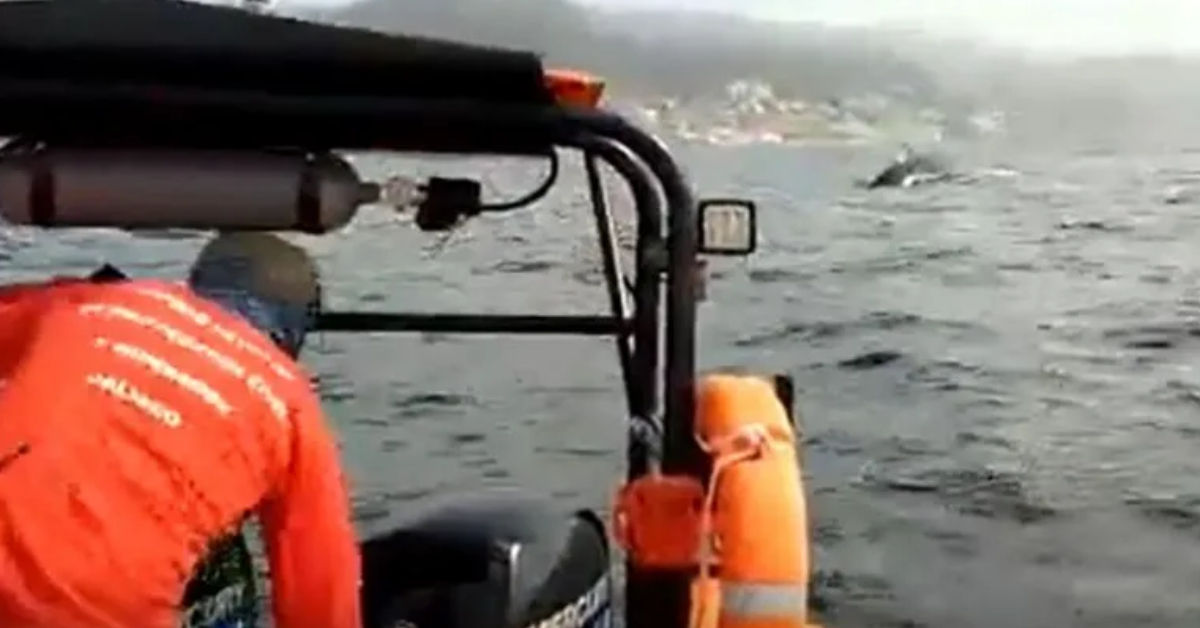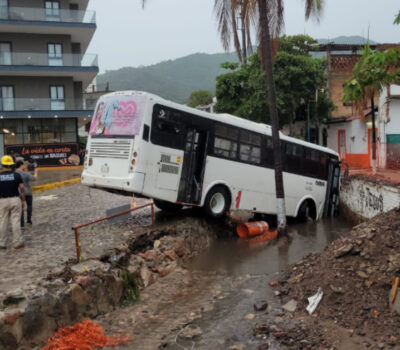Puerto Vallarta (PVDN) – A pair of humpback whales said goodbye in front of a Civil Protection surveillance unit off the coast of Puerto Vallarta.
On April 1st, members of the Puerto Vallarta Civil Protection Department sighted a couple of whales near the beaches while carrying out surveillance operations, which was an extraordinary event since spotting whales in April is rare as they typically head north during the month of March.
The whales that most frequent the coasts of Puerto Vallarta are the humpback whales. As arctic water temperatures drop, whales make a 15,000-kilometre round trip to the coast of Mexico, seeking warmer waters with more abundance of krill and small fish to feed on. During their visits, the whales mate and give birth in what they consider to be the safe waters of Puerto Vallarta.
The migration of whales to the Jalisco coast begins at the end of September and their arrival off the coast of Puerto Vallarta shortly after. Their presence in the Bay is guaranteed until March and very rarely can they be seen in April, which is why the meeting with members of Civil Protection is so special.
From Alaska to Mexico: Witness the Spectacular Migration of Humpback Whales in Puerto Vallarta
Every year, thousands of humpback whales travel more than 4,000 miles from the icy waters of Alaska to the warm waters of the Pacific coast of Mexico. They come here to mate, give birth, and nurse their young, and Puerto Vallarta is one of the best places in the world to see them up close.
Whale-watching tours in Puerto Vallarta typically last about three hours and depart from the Marina Vallarta or the Nuevo Vallarta Marina. The boats used for these tours are specially designed to minimize their impact on the whales and their environment. They are equipped with hydrophones, which allow passengers to listen to the whales’ songs and calls underwater.
As you sail out into the open ocean, keep your eyes peeled for the telltale signs of whale activity – spouts of water and air, the fluke of a tail, or a breach as a whale jumps out of the water. Humpback whales are known for their acrobatic displays, and if you’re lucky, you might see them leaping out of the water or slapping their fins on the surface.
During the tour, a knowledgeable guide will provide information about the whales and their behavior. You’ll learn about their migration patterns, feeding habits, and social interactions. You’ll also learn about the efforts to protect these magnificent creatures and their habitat.
In addition to humpback whales, you may also spot other marine life on your tour, such as dolphins, sea turtles, and various species of birds. And if you’re really lucky, you might even see a pod of killer whales or a giant manta ray.
Whale-watching tours in Puerto Vallarta are offered by a number of companies, and prices vary depending on the length of the tour and the size of the boat. It’s a good idea to book in advance, especially during the peak whale-watching season, to ensure you get a spot on a tour.
When planning your whale-watching excursion, remember to dress in layers, wear sunscreen and a hat, and bring a camera and binoculars. And don’t forget to be respectful of the whales and their environment – keep a safe distance, avoid making loud noises or sudden movements, and follow the instructions of your guide.
Puerto Vallarta (PVDN) - A pair of humpback whales said goodbye in front of a Civil Protection surveillance unit off the coast of Puerto Vallarta . . .












